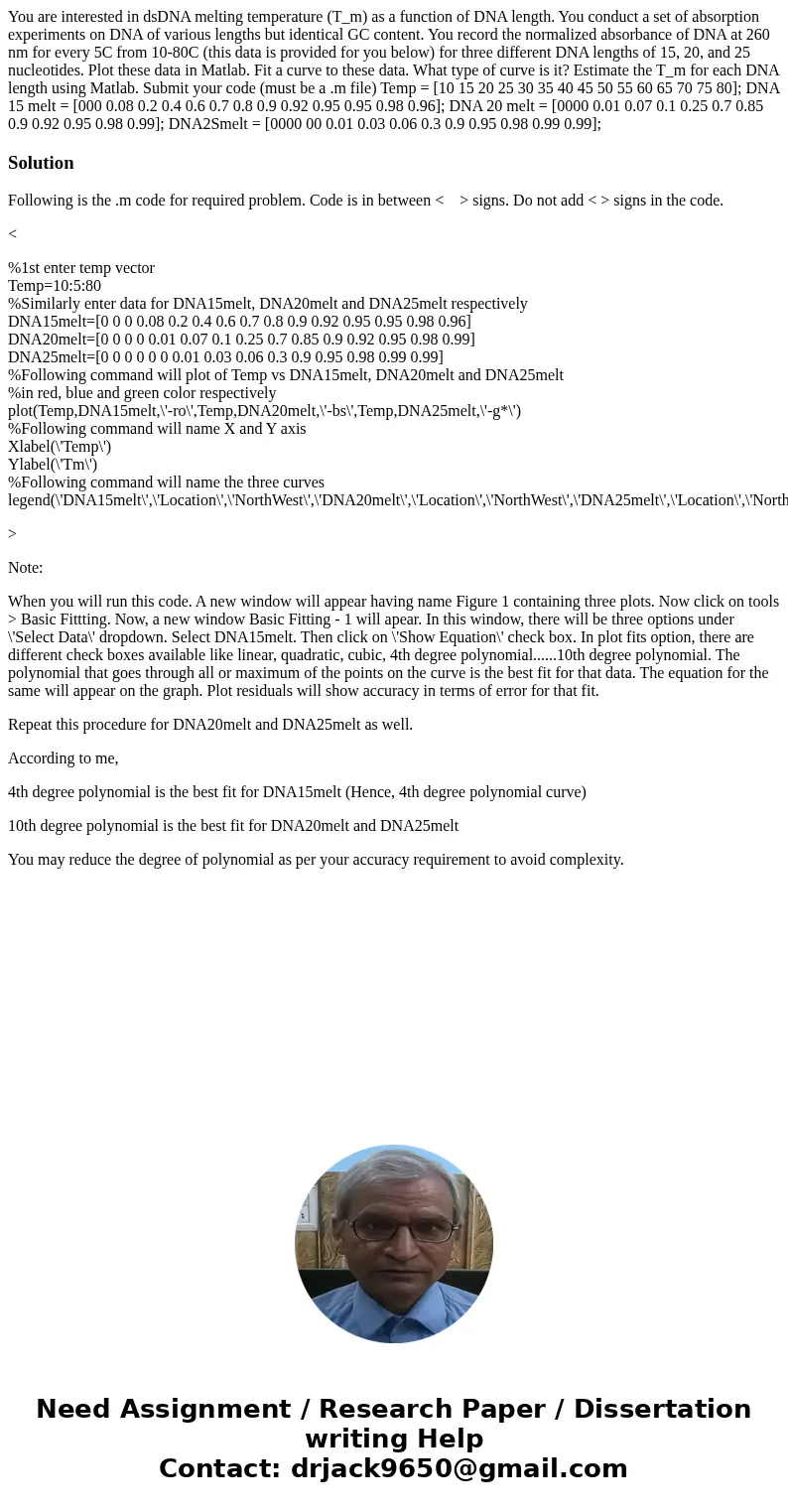You are interested in dsDNA melting temperature Tm as a func
Solution
Following is the .m code for required problem. Code is in between < > signs. Do not add < > signs in the code.
<
%1st enter temp vector
Temp=10:5:80
%Similarly enter data for DNA15melt, DNA20melt and DNA25melt respectively
DNA15melt=[0 0 0 0.08 0.2 0.4 0.6 0.7 0.8 0.9 0.92 0.95 0.95 0.98 0.96]
DNA20melt=[0 0 0 0 0.01 0.07 0.1 0.25 0.7 0.85 0.9 0.92 0.95 0.98 0.99]
DNA25melt=[0 0 0 0 0 0 0.01 0.03 0.06 0.3 0.9 0.95 0.98 0.99 0.99]
%Following command will plot of Temp vs DNA15melt, DNA20melt and DNA25melt
%in red, blue and green color respectively
plot(Temp,DNA15melt,\'-ro\',Temp,DNA20melt,\'-bs\',Temp,DNA25melt,\'-g*\')
%Following command will name X and Y axis
Xlabel(\'Temp\')
Ylabel(\'Tm\')
%Following command will name the three curves
legend(\'DNA15melt\',\'Location\',\'NorthWest\',\'DNA20melt\',\'Location\',\'NorthWest\',\'DNA25melt\',\'Location\',\'NorthWest\')
>
Note:
When you will run this code. A new window will appear having name Figure 1 containing three plots. Now click on tools > Basic Fittting. Now, a new window Basic Fitting - 1 will apear. In this window, there will be three options under \'Select Data\' dropdown. Select DNA15melt. Then click on \'Show Equation\' check box. In plot fits option, there are different check boxes available like linear, quadratic, cubic, 4th degree polynomial......10th degree polynomial. The polynomial that goes through all or maximum of the points on the curve is the best fit for that data. The equation for the same will appear on the graph. Plot residuals will show accuracy in terms of error for that fit.
Repeat this procedure for DNA20melt and DNA25melt as well.
According to me,
4th degree polynomial is the best fit for DNA15melt (Hence, 4th degree polynomial curve)
10th degree polynomial is the best fit for DNA20melt and DNA25melt
You may reduce the degree of polynomial as per your accuracy requirement to avoid complexity.

 Homework Sourse
Homework Sourse